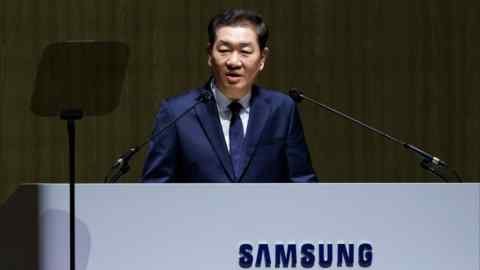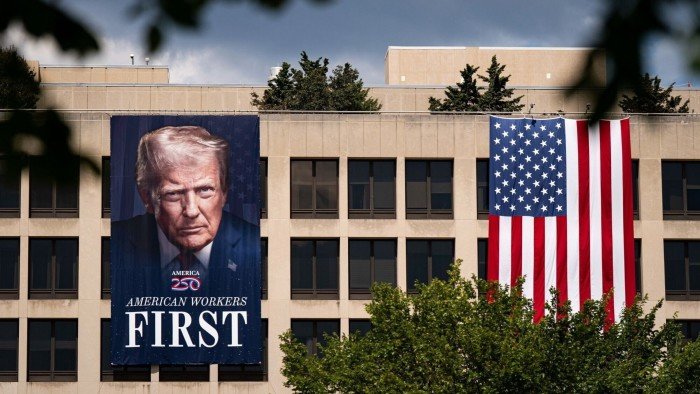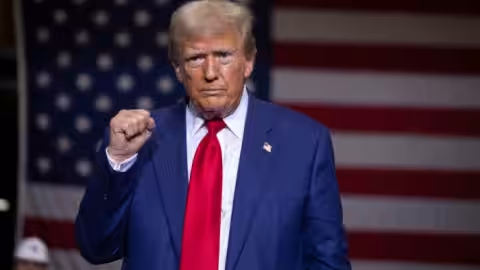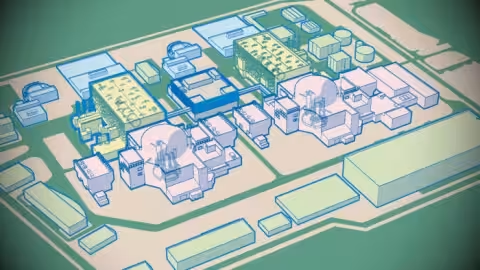Samsung Electronics delivered an earnings shock on Tuesday, projecting a 56 per cent drop in second-quarter operating profit, as US restrictions on China and its struggle to supply key customer Nvidia with advanced memory products weighed on its performance.
The company, one of the world’s largest makers of memory chips, estimated its operating profit for April to June at Won4.6tn ($3.3bn), its weakest in six quarters and the fourth consecutive quarterly decline. It was significantly lower than the Won6.3tn profit forecast by LSEG SmartEstimate. Sales were little changed at Won74tn.
Samsung’s device solution division, which houses its chip business, recorded a quarter-on-quarter “decline in profit due to inventory value adjustments and the impact of US restrictions on advanced [artificial intelligence] chips for China”, the company said.
The worse than expected guidance will intensify concerns about the continuing delays in the South Korean tech giant being able to supply its latest HBM3E chips to AI leader Nvidia. Smaller rivals SK Hynix and Micron Technology are enjoying booming demand for their advanced HBM chips.
Samsung recently began supplying HBM3E to chipmakers AMD and Broadcom, but has yet to win Nvidia’s approval of its performance. With the company failing to capitalise on the AI boom, Samsung shares have gained just 20 per cent so far this year, largely due to their relatively low valuation, while SK Hynix shares have surged almost 60 per cent.
In June, Samsung recorded its lowest share of South Korea’s flagship Kospi stock benchmark for nine years.
Last month, Micron forecast stronger than expected quarterly revenues on robust demand for HBM chips, while SK Hynix, the main HBM supplier to Nvidia, is expected to report record quarterly earnings.
Samsung said its improved HBM chips were undergoing customer evaluation and were being shipped, but did not name the clients.
Analysts estimate Samsung suffered more than Won4tn of foundry losses in the first half, as the company failed to secure big customers for its contract manufacturing business, due to poor yields and the widening gap with industry leader TSMC.
Samsung said US curbs on China-bound AI chips also had an adverse impact on the foundry business, but it expected operating losses to narrow in the second half on a gradual recovery in demand.
“The non-memory business experienced a decline in earnings due to sales restrictions and related inventory value adjustments stemming from US export restrictions on advanced AI chips for China, as well as continued low utilisation rates,” the company said.
“What counts most is its HBM supply to [Nvidia] and the overall chip demand recovery,” said analysts at DS Investment & Securities in a recent report. “But [Samsung’s] earnings will probably rebound in the third quarter after hitting the bottom in the second.”
The group revealed earlier this year that the value of its exports to China had jumped 54 per cent between 2023 and 2024, as Chinese companies rushed to secure stockpiles of advanced AI chips in the face of increasingly restrictive US export controls.
US tariffs are also hurting sales of Samsung TVs and other home appliances, while the stronger Korean won, which has appreciated about 7 per cent against the dollar so far this year, is also affecting its price competitiveness.
Samsung hopes to regain ground in the smartphone market with the launch of thinner foldables in New York later this week. Global foldable handset shipments increased 12 per cent to 17.2mn units last year, but Samsung’s share of the market fell from 54 per cent to 45 per cent.























